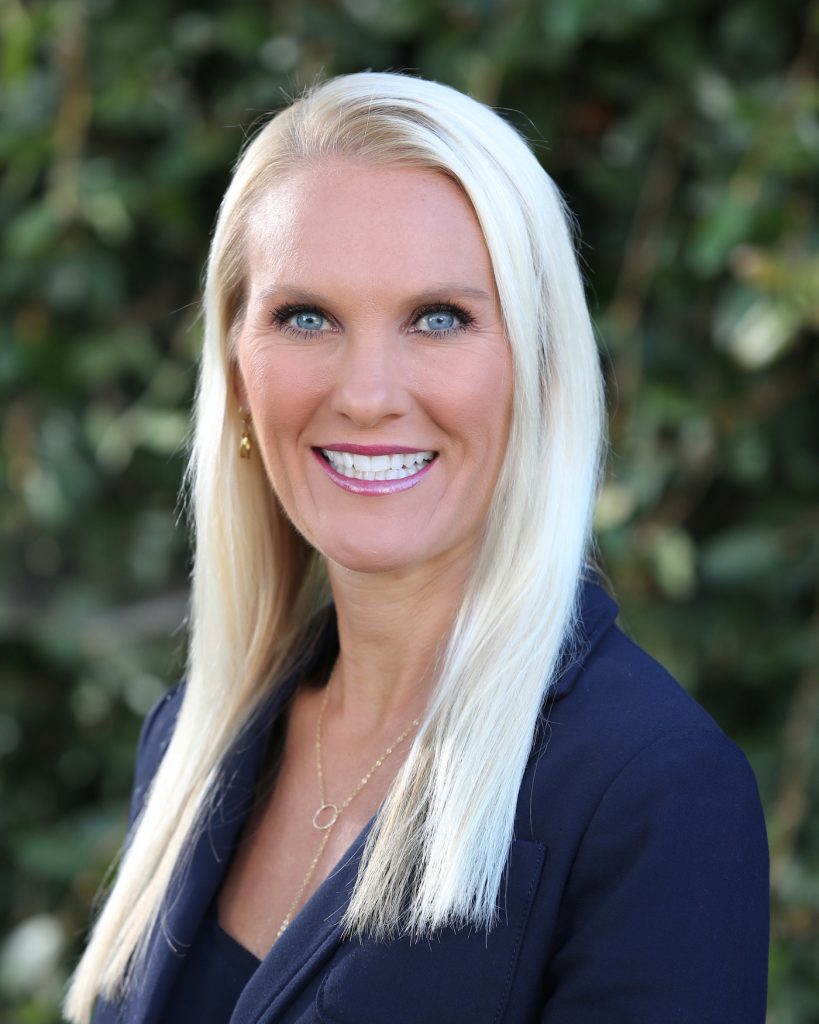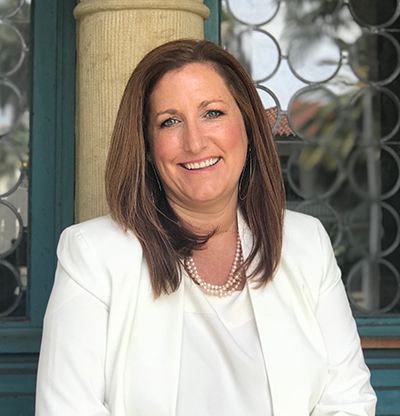Election Season Haunts: Santa Barbara Area School Reopening Politics
On Tuesday, October 20, a few dozen teenagers held a protest outside the Santa Barbara Unified School District’s headquarters on Santa Barbara Street. Carrying signs bearing messages such as “We Want to Go Back to School” and “Give Us a Choice,” the group had a clear message for local school officials: After more than a half of year of online-only education, during which students have been stuck at home in endless Zoom sessions with their teachers, they were more than ready to be let back on campus and none too happy about the district’s decision to hold off on in-classroom study until January 19.
Although the protest only drew about 35 students, their activism represents a growing sense of impatience with COVID-era social distancing and its impact on secondary education. It also reflects a troubling reality: How seemingly every facet of public life in this unprecedentedly heated election season has become politicized.

SB Unified Trustee Laura Capps, who is campaigning for re-election this year, says that despite such extreme rhetoric, she understands that many parents have valid concerns about the district’s decision to suspend in-classroom teaching until January.
“We all want kids to be back in the classroom, and I understand the tremendous stress and anxiety that people have, ranging from people experiencing extreme hardship and poverty to basic concerns about teenagers being disconnected,” Capps said. “What I try to do as a board member is to strike the right balance to protect teachers and students from the deadly virus and the need to get students back in the classroom.” Capps said Hilda Maldonado contacted a few of the students who organized the protest last week and requested a meeting with them, which both Capps and fellow board member Jackie Reid personally attended. “The fact they organized was wonderful,” she said. “I wish we weren’t in this situation, but I really enjoyed hearing from them about their specific concerns.”
Capps added that, while the majority of students won’t be back on campus until January 19, the school has already begun the process of bringing small cohorts of students back to school by restarting outdoor athletics as well as providing on-campus learning for students with special needs or those lacking either a stable home study environment or adequate Wi-Fi.
“That’s been happening all over the district and it will continue to expand,” she said. “And we are all systems go for hybrid learning when classes start again in January, which is really just a few weeks away. Everybody is doing their best and I sympathize with all the parents that are worried, as well as the teachers that are worried because they teach 300 kids a day and we’re still in the middle of a pandemic.”
The major challenge in reopening large public schools such as Santa Barbara High School (SBHS) is the need to transition from large class sizes to smaller ones as well as staggering schedules so that as few teachers and students come into contact with each other as possible. Whereas before the pandemic, typical classes consisted of an average of 35 students, now that number is down to 14, which is the largest number of desks that can be safely socially-distanced within a typical classroom.
According to SBHS Principal Elise Simmons, the major challenge in accomplishing that goal is hiring new staff. “Staffing is our biggest obstacle,” Simmons said. “No matter how much plexiglass or hand sanitizer we buy, we have people who are afraid to come to campus because they have underlying health issues and aren’t even leaving their homes unless they’re going to the grocery store.”

Simmons said that SBHS is constantly updating its strategy on reopening via an advisory task force made up of parents, students, and teachers. The school has also added shaded outdoor learning spaces in order to provide greater flexibility for teachers who prefer to teach outdoors. The preparation for a return to on-campus learning has been strenuous, she added. “Teachers are now teaching three periods, three times a day,” she explained. “The pace is different, they have half the amount of time and they have had to rewrite their curriculum for distance learning in a shorter time frame.”
Like Capps, Simmons says she sympathizes with parents and students who are impatient for things to get back to normal. “I think we can all agree that in-person instruction is the best thing for children, both academically, socially, and emotionally,” she said. “Given that assertion, we have varying degrees of frustration depending on who we are as parents, teachers, and administrators. And we have in our community a wide spectrum of what people consider to be safe. Therein lies the political discord and divisiveness.”
Summerland School, meanwhile, reopened on October 13 with the students divided into two learning cohorts designated by the first initial of their last names. All students are required to wear a mask. They also need to be fever-free, with no COVID symptoms, and siblings have been placed in the same cohorts. Classes are divided into “in person” and “remote” sessions with their teachers at the school.
“Half of our students come on Monday and Tuesday for in person learning and the other half come on Thursday and Friday,” said Summerland School Principal Dr. Michelle Fox, who also doubles as principal of Aliso School in Carpinteria. “All students participate in remote learning on their off-campus days. All students Zoom with their teachers on Wednesdays.”
Handwashing and hand sanitizer stations have been added throughout the small campus and custodial cleaning is being carried out everywhere from restrooms and classrooms to door handles and other surfaces throughout the day. Students are instructed in safe practices – from handwashing to social distancing, but sadly, no sharing of crayons, books, or art materials due to COVID, nor display of assignments or artwork on the bulletin board, are being allowed so far.
Both of Montecito’s two public elementary schools have already opened and neither school has experienced a single COVID-related illness so far. According to Anthony Ranii, principal of Montecito Union School (MUS), which reopened on September 28, planning for reopening the campus began almost as soon as the school closed down last March.
“We started building a comprehensive plan at the same time that we were working on developing high-quality distance learning,” Ranii said. “That planning involved teachers, staff, administration, parents, and the board of trustees.”
One key aspect of the plan, Ranii said, was to reduce class sizes to create effective social distancing. “In order to get students back five days a week, we projected needing 21 classes of 14 kids per class, but the number of classes actually went up to 26,” he said. “So we had to add some new classroom teaching positions.”
To accommodate the extra classrooms, outdoor classrooms, complete with shade, plexiglass dividers, new furniture, and upgraded Wi-Fi service were created. “That was a big step,” Ranii said. “And in order to keep all the classes distinct as small cohorts, we staggered our start and end times so kids aren’t all coming or going at the same time and are just eating lunch or having recess with their own classroom.”
Certain specialized classes such as physical education and art are still being taught online via Zoom, Ranii said. “I can’t have one art teacher interacting with 26 classrooms,” he added. “About 95 percent of our students are back on campus, and knock on wood, so far we have had zero staff and zero students test positive [for COVID].”
Cold Spring School reopened even earlier than MUS, on September 22. “We were the first school to reopen under the waiver,” said Principal Amy Alzina. Readers of the Montecito Journal are likely aware of the fact that the school is seeking to raise $7.8 million in bonds from local property owners this November 3 to pay for three new permanent classrooms, which has led to a mini-uprising among some neighbors who have feuded with Alzina and other school administrators ever since 2008, when the school unsuccessfully sought to raise $14 million in funds to upgrade the campus.
You can read more about this controversy in MJ editor Gwyn Lurie’s editorial this week. For her part, Alzina said she is simply looking forward to election season being over. She’s much more excited about the school’s upcoming Halloween bash this Friday, where socially-distanced teachers in costume will be funneling candy via appropriately long rain gutters to student trick-or-treaters.
“I’m just glad we were able to reopen,” said Alzina. “That, and the fact that we can actually have a Halloween bash on campus this year.”
– Additional reporting on Summerland School by Leslie A. Westbrook
Montecito Hosts Post-Election Day Virtual Townhall on Bear Safety
According to Executive Director Sharon Byrne, the Montecito Association will be hosting a virtual townhall discussion with the Department of California Fish and Wildlife’s Rebecca Barboza on handling bear issues in Montecito, including how we can safely navigate hyperphagia season, when bears are trying to consume a lot of calories in preparation for winter hibernation.
All Montecito neighbors are welcome to the event, which takes place November 4 at 4:30 pm. Please email info@montecitoassociation.org for more information, including how to login to the townhall.







